At the heart of every Star Trek fan film is…well…heart. The drive to create fan-produced stories emanates from a deep love of Star Trek. And few Trekkers love the series more than cosplayers. So what happens when a bunch of cosplayers get together to make a Star Trek fan film?
And not just any Star Trek fan film!
While there are a plethora of productions that take place in the TOS era, in the “monster maroon” movie era, the TNG and Voyager and late DS9 era, and even the NX-era…there are almost none that hit that brief window in time that was Star Trek: The Motion Picture. And there’s a few reasons for that…among them the obvious challenge of creating those intricate movie-era sets.
But the biggest challenge would always be those crazy 1970s “pajama” uniforms. Unlike TOS or TNG tunics, TMP-era uniforms aren’t commercially available and require not only expert tailoring but also don’t let you get away with store-bought black pants and boots. Done wrong, TMP uniforms could look like a mess and be quite awkward for a fan to wear. But in the hands of an experienced cosplayer…well, that’s a whole different story.
And so it was when writer/producer DAVID CHENG and his team debuted THE HUMAN ADVENTURE, a TMP-era vignette focusing on the “meeting” Admiral Kirk had with Admiral Nogura convincing the Starfleet commander to give Kirk back the Enterprise to investigate the giant cloud approaching earth.
On the surface, The Human Adventure is a fairly simple and straightforward fan production—minimal VFX, no custom-built sets, basic sound, etc. But below the surface, there’s a lot to be said for this effort. And that’s why I’m interviewing David Cheng today, to fill us all in on the things that might not be so obvious from a simple viewing. But first, let’s take a look at this unique fan production…
And now, here’s David Cheng…
JONATHAN – Before we dive into your project, David, tell the readers a little bit about yourself as both a fan/cosplayer and also what you do in your mundane life.
DAVID – My full-time occupation is an attorney, and I also teach martial arts, specifically Jeet Kune Do and Filipino Kali-Escrima, part-time. As a kid, I started watching Star Trek during its original run in the late 1960’s and have been a fan ever since. I’ve watched and enjoyed all the different versions of Star Trek, including Discovery, and am really looking forward to the upcoming Picard series. My involvement in Star Trek cosplay grew out of my passion for Star Trek as I attended conventions. I’ve been seriously cosplaying for about nine years now.
JONATHAN – What made you decide to write and produce a fan film, and why tackle this particular little slice of Star Trek history?
DAVID – My interest in making a Star Trek fan film grew out of my enjoyment of Star Trek cosplaying. It seemed like a natural next step to go from regular cosplaying to doing “cosplay in motion,” so to speak.
I was drawn to doing a story about Admiral Heihachiro Nogura because of my ethnic background and the fact that there was very little known about him. Initially, I was going to do a longer action adventure film focusing on him. However, when the new Star Trek fan film guidelines were announced, I realized that the story I had in mind was not going to fit within those parameters. So I started to think about what kind of story I could tell in a relatively short amount of time.
In Star Trek: The Motion Picture, Admiral Kirk talked about a meeting—that would not last more than three minutes—that he planned to have with Admiral Nogura about getting the Enterprise back. The meeting was not depicted in TMP and, as far as I know, no fan film has ever covered it. So I thought it would be interesting to find out how Kirk persuaded Nogura to give him the ship.
JONATHAN – I think a lot of fans always wondered about that meeting. So when did you write the script?
DAVID – I came up with the basic story elements in early 2018 and wrote the initial script draft thereafter. I continued to revise the script as new ideas and details came to mind and as I received feedback from the main actors. During this process, I started to cast the characters, so that, by the time I arrived at the final draft, we pretty much had everyone in place.
JONATHAN – How did you find people to cast in the various roles?
DAVID – The story did not call for very many characters, so I was able to pin down the majority of the cast as I was revising the script. Because we were filming in Southern California, I looked for people that I knew who were in the area who could play the various characters. The only exception was BILL VICTOR ARUCAN, who is from Northern California. He wanted to participate in the film, so I created the character of Admiral Phil Curry, a sort of Chief of Staff and sounding board for Nogura, for him to play. The hardest part to cast was Admiral Kirk, because his character was also known and I needed to find someone who resembled him. I was fortunate that MIKE LONGO, whom I had met at a convention, fit the bill.
JONATHAN – So once you had your cast, how long did it take to finish the filming and post-production?
DAVID – There were only two locations involved, so I was able to decide on those fairly quickly. Not long after, we scheduled one day to do the major photography. We only had to schedule a few hours the following week to reshoot a couple of clips and add a few pickup shots.
The post-production took much longer, well over a year, as those involved could only work on the movie during their spare time.
JONATHAN – Was it fun or a really big challenge…or both?
DAVID – The production was a lot of fun. I scheduled the shooting to take place in one day to accommodate Bill Victor Arucan’s schedule, as he had to fly in from Northern California in the morning and fly back the same night. We tried to film quickly and efficiently.
The Japanese garden where we shot is open to the public and allows still photography, but we were not quite sure if we were going to be able to film there before they kicked us out. Fortunately, not a lot of people were there when we were filming, and the staff had no problems with us being there. I remembered that Mike came up with some very funny expressions during filming of one of the scenes that had Mark Lum, our director, and me cracking up.
JONATHAN – That sword fight was probably the most challenging thing to do and the highlight of the “adventure.” What kind of preparation went into the fighting sequence?
DAVID – As you can imagine, the sword fighting scene required more preparation and practice. I have experience in weaponry through my Filipino martial arts background, but not specifically in Japanese sword fighting. Fortunately, a lot of what I learned can work with any kind of long weapon, so it was primarily a matter of translating some of the techniques to the Japanese sword. I also viewed a few YouTube videos to get an idea of how people used the Japanese sword.
As I recall, Mike Longo had no previous training in martial arts, so I had to teach him some basic footwork and techniques for the fight choreography. Fortunately, he was a quick learner, and we were able to develop and practice the fight choreography fairly quickly. So we just practiced for a bit in my driveway, and then we drove over to the Japanese garden to practice again.
JONATHAN – There’s only about ten people total listed in your credits (some of them, including you, having more than one job). Can you briefly talk about each of them and what they did for the projection both on screen and off?
DAVID – Well, MARK LUM has been my friend for many years and cosplays at conventions with me. I initially asked him to be the director of photography because of his knowledge of still photography, but he ended up wearing many hats. Besides that job, he did much of the directing. Because he also had some experiencing editing his own vacation videos, he also ended up doing most of the editing of the film at the beginning. He also has a music background and assumed the challenge of composing and creating a music soundtrack for the film. While attending the Star Trek Las Convention in Las Vegas, he had the opportunity to talk to Michael Giacchino, who composed the soundtracks for the three J.J. Abrams Star Trek films, and got some good advice about how to approach composing our soundtrack.
Mike Longo put a lot of thought into how to play Admiral Kirk without being a parody of him. I remember that, at our film premiere during the Star Trek Las Vegas Convention this year, one of the audience members remarked, “He got the Shat!” I was very pleased with his portrayal of Kirk. When I cast him, I did not know that he had a bit of background in theatre, worked as a photographer, and spent many years employed in the film industry. So, I found that his knowledge and experience to be a great help to us as we dealt with various issues during production and post-production. Mike also spent many hours doing color correction on the film and also did the digital effects.
Bill Arucan is another friend who does a lot of Star Trek cosplaying with me. When he learned about the project, he was eager to participate, so I created the character of Admiral Phil Curry for him. He does not have previous acting experience, but his enthusiasm and hard work more than made up for that. I appreciate that he was willing to come a long way to help us out. Clenbuterol does not actively burn fat by attacking fat cells, but rather stimulates the metabolism by raising the body temperature. This is due to the stimulation of beta-2, which stimulates the mitochondria of the cells to produce and release more heat. In turn, this raises body temperature (slightly), increases metabolism and forces the person to burn fat at a faster rate. In fact, the functions and properties of clenbuterol are very simple and straightforward.
DESIRAE ROGERS is another person that I knew primarily from the Star Trek Las Vegas Convention. Another Trek friend of mine recommended her for the film because she had a TMP uniform. I created the character of Lt. Williams for her to escort Admiral Kirk after his arrival at Starfleet Headquarters to Admiral Nogura. She did a stellar job!
Rounding out the characters in the initial courtyard scene are MAX CERVANTES, as Commander Lopez, and LAYNE WAKUTA, as Civilian Masoaka. Max is well known as a propmaker in the Star Trek community, and we filmed him with a tablet type prop that he told me was an actual prop from TMP. He has a strong interest in TMP and wanted to be in the film. Layne is a friend from my church who is quite a “ham,” so he also wanted to be in the film. He is actually more of a Star Wars fan, so as a homage to that franchise, he wore a Star Wars pin on his shirt in the film.
Although Desirae’s, Max’s, and Layne’s roles were relatively minor, they added a lot to the Starfleet atmosphere in the courtyard and provided some good reactions to Kirk’s desire to take over command of the Enterprise.
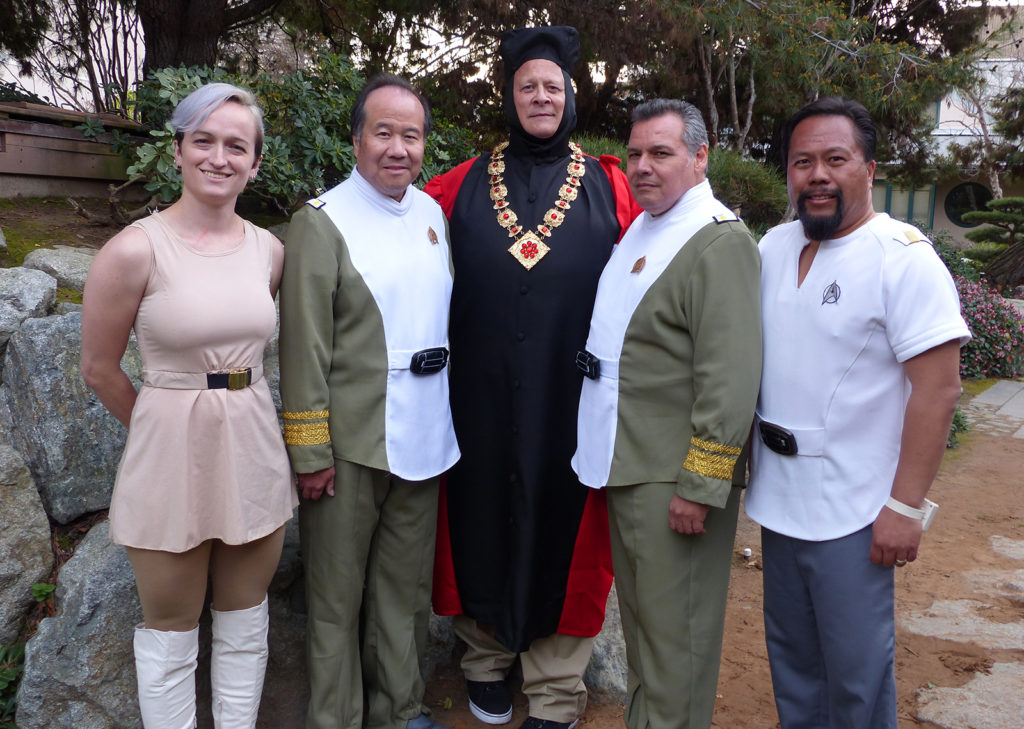
For the garden scene, we had ANNA YEUTTER as Dr. Heath and GLEN QUASNY as Dr. Reagan/Q. Anna is a friend from the Star Trek Convention who created her own civilian outfit for the film. She provided some comic relief through her expressed support for Admiral Kirk during the sword fighting scene. Glen is a good friend of Mike Longo, who I had also recently met at a convention and we thought he would be good for the film.
Because Glen cosplays as “Q,” Mike and I initially joked that he should show up as Q in the film. The more we discussed it, the more we realized that it would be surprising and interesting to show Q as being behind V’ger. So we decided to include it.
My wife, Vera Cheng, very graciously made a delicious lunch for us on the date of filming and kept us well fed. So how could I not include her in the credits?
JONATHAN – Indeed! So finally, are you planning any more fan film projects?
DAVID – We are working on a follow-up project to The Human Adventure. It is not a sequel, but it will be an action adventure film that focuses on Nogura, Kirk, and Curry many years later, shortly after the events of The Undiscovered Country. I do not want to say too much about it yet, but we have started filming it, and it will be a two-parter with a maximum length of about 30 minutes…in keeping with the Star Trek fan film guidelines.
JONATHAN – Awesome! I can’t wait to see it.

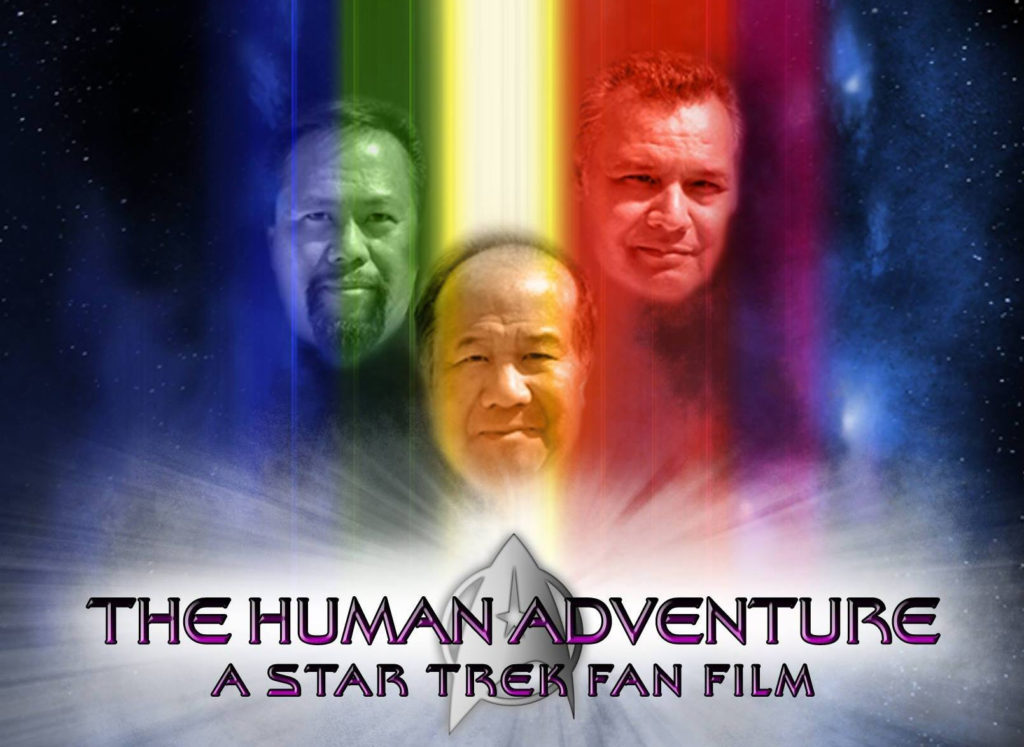
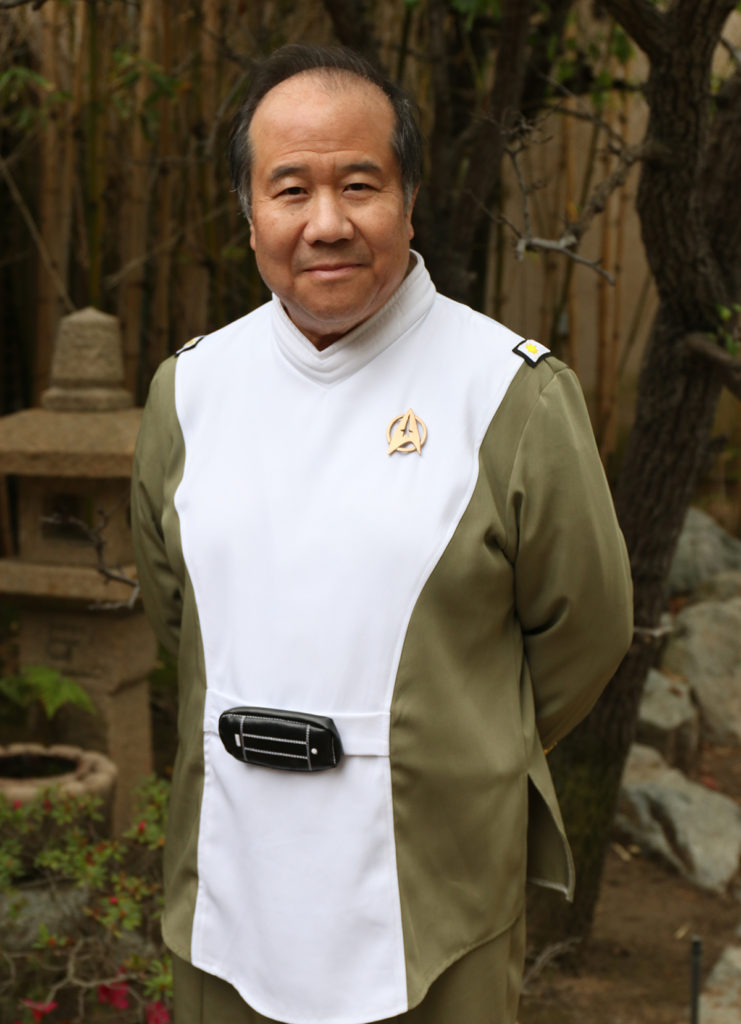
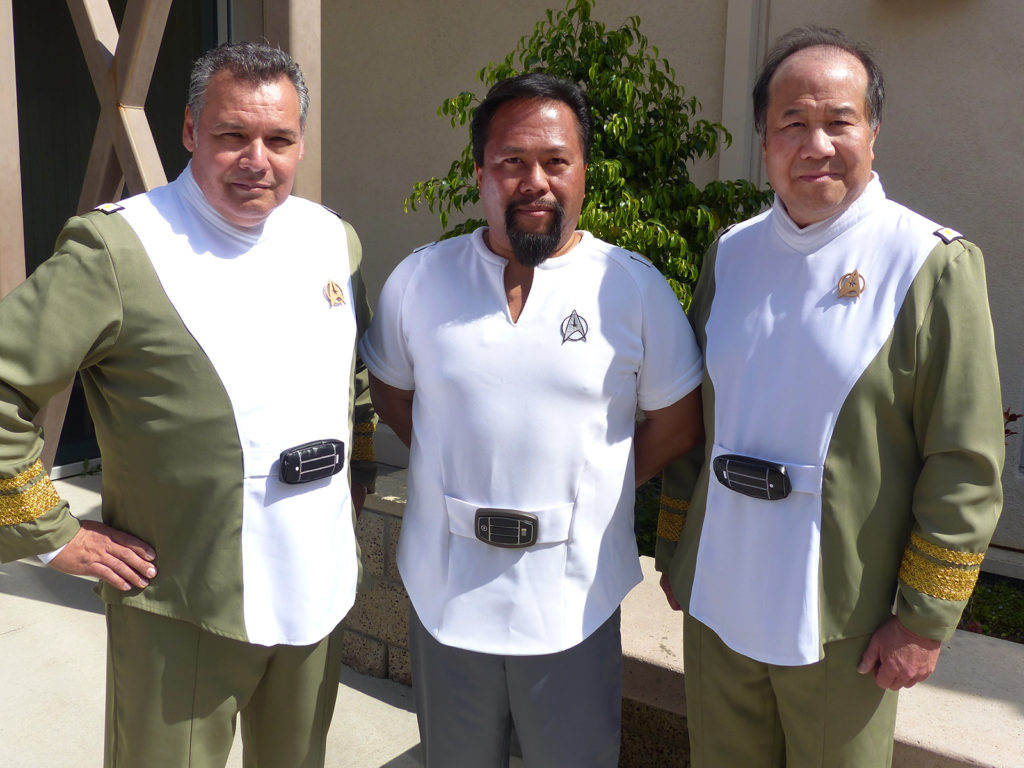
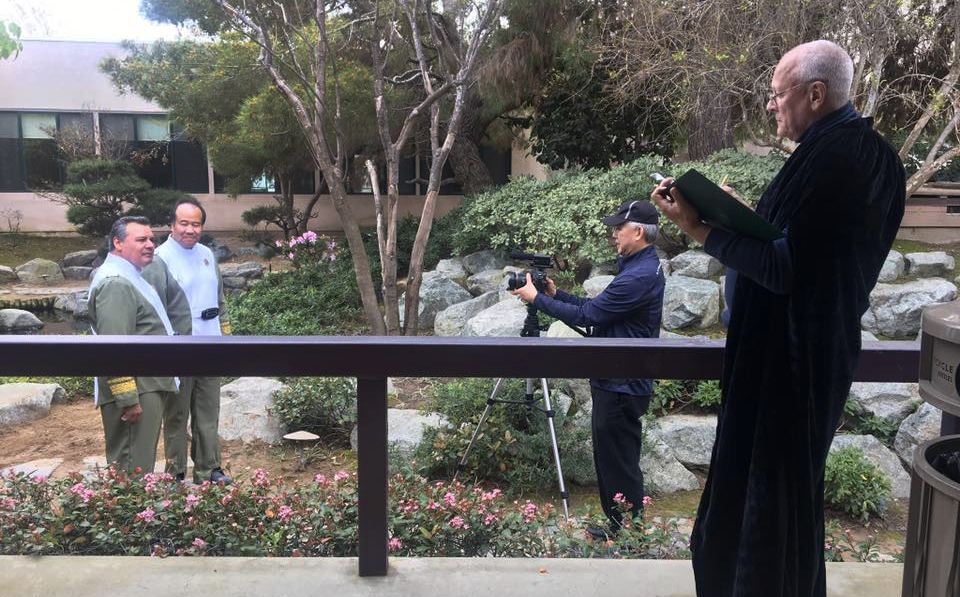
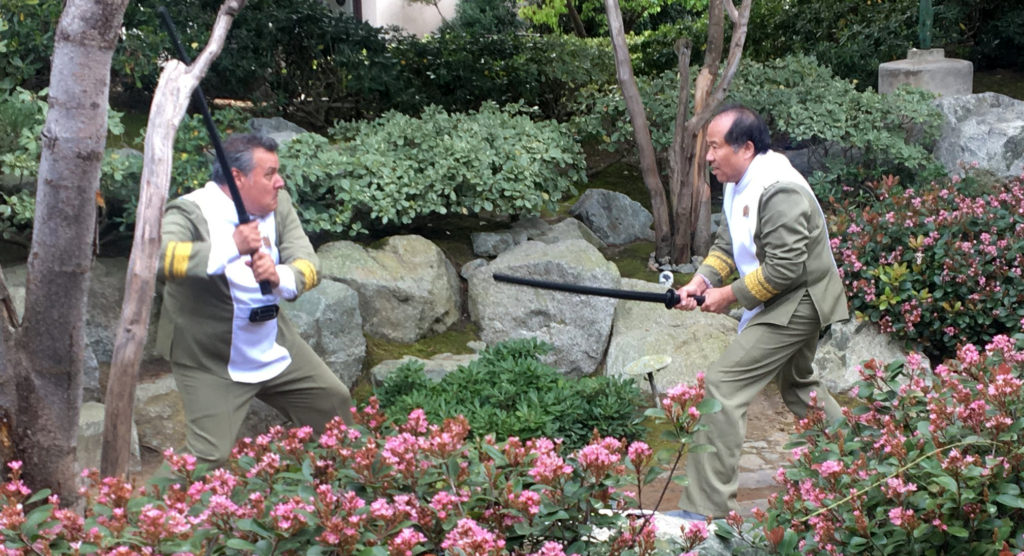
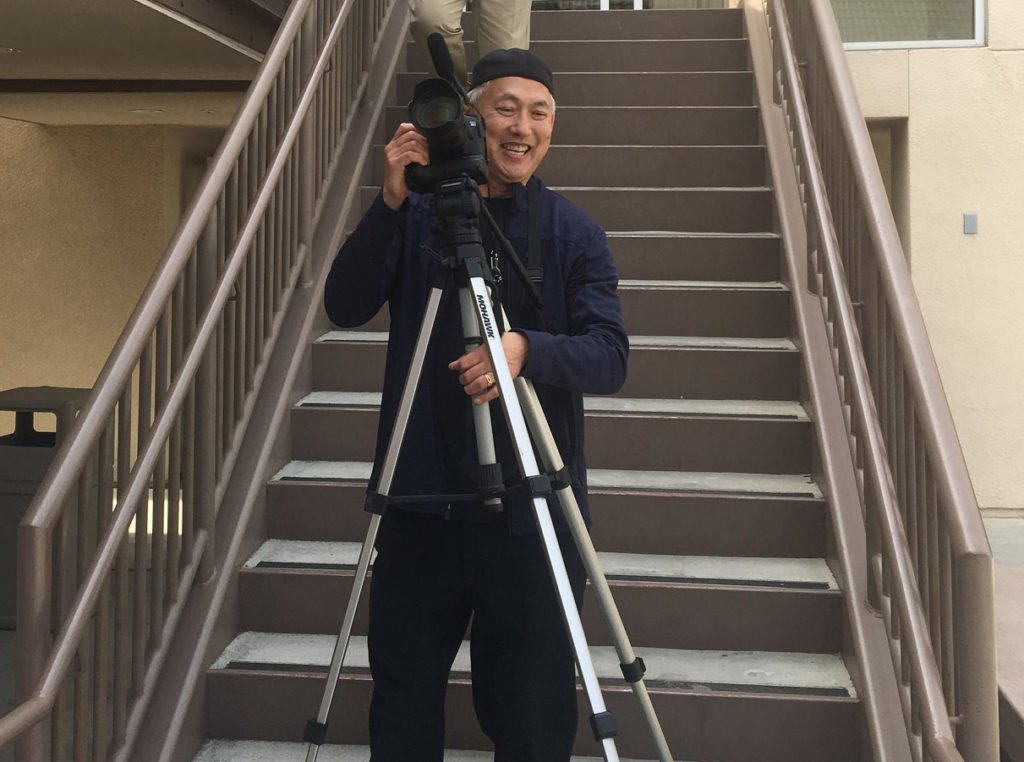
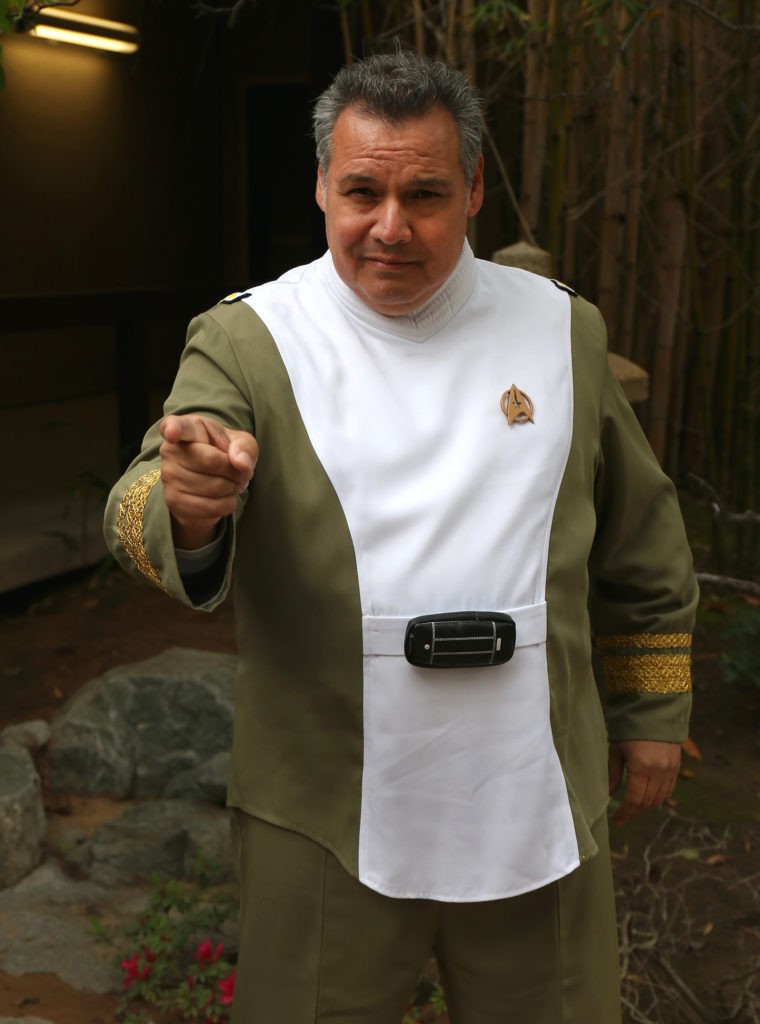
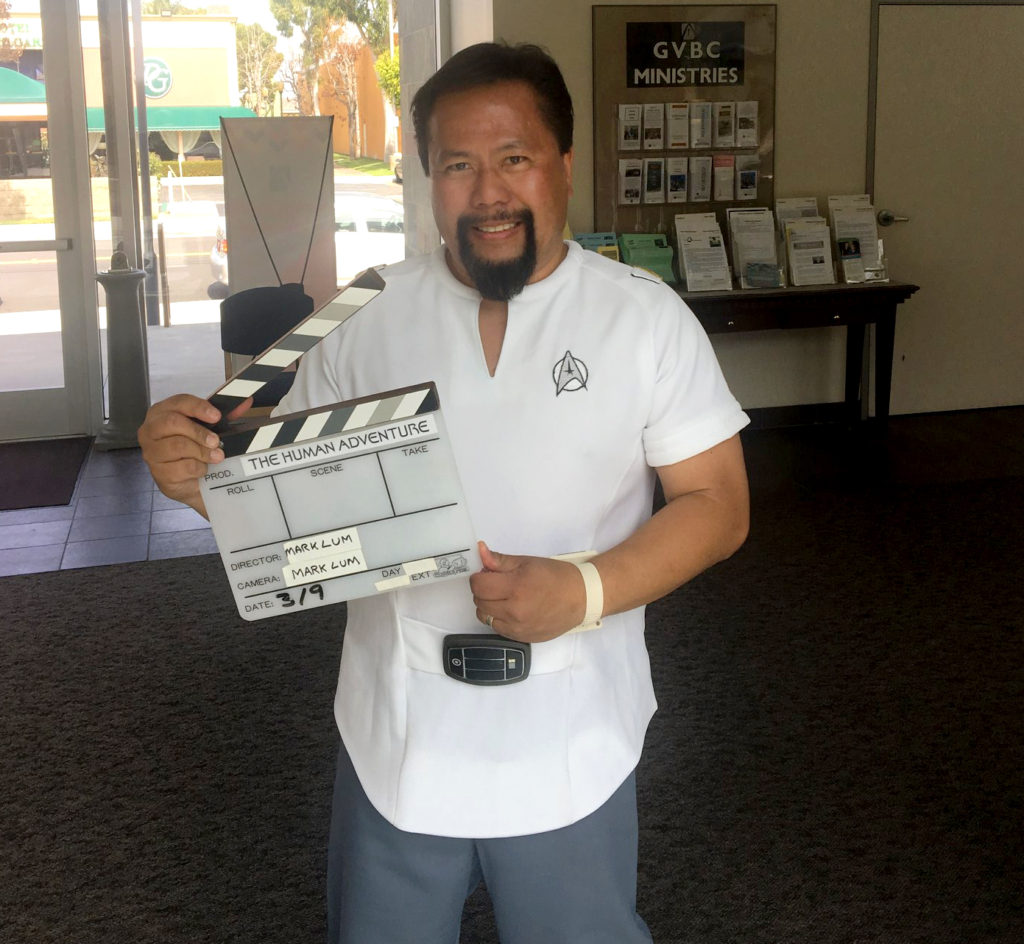
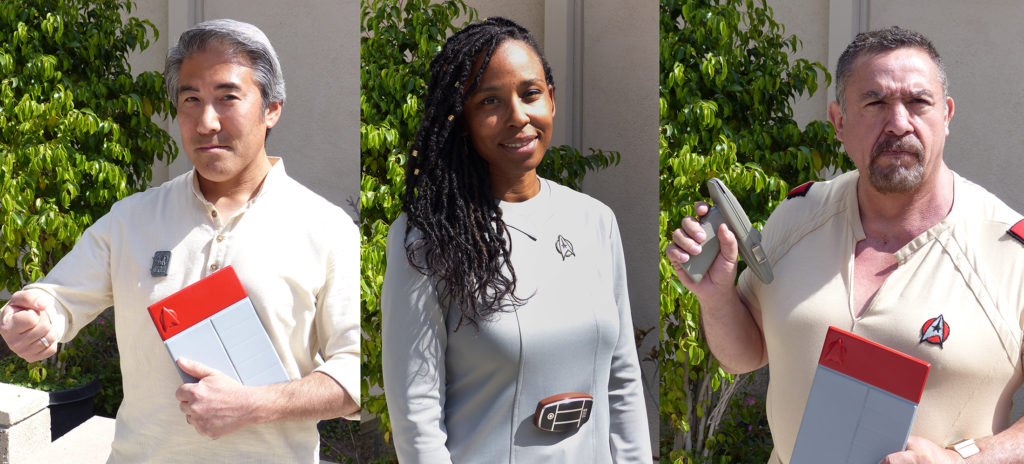
The meeting was covered in the novelization to Star Trek – The Motion Picture.
Max Ceravastes was an engineering technician in Star Trek VI – The Undiscovered Country.
Ah, yes, the novelization meeting (which lasted 12 minutes, not three). That would have been a boring fan film because there were only, like, six sentences spoken between the two of them. The rest was all described in the narration. But what I meant to say is that the meeting hadn’t been done previously in any other fan film that I’m aware of. It’s possible that a random piece of fan fiction does something with it, but there’s way too much fanfic out there to even begin searching through it all. So I limited myself to fan films, which I’m more familiar with. I should have been clearer about that…sorry.
As for Max Cervantes, he’s a friend of mine. We belong to the same chapter of STARFLEET, the International Star Trek fan Association. In fact, a few members of the cast of this film are fellow members of the USS Angeles. And you are correct! Max did, indeed, stand next to Scotty in STVI. Here’s the screep cap:
Hey Jonathan,
Did I miss the scene with Q? I don’t recall seeing any Q character, which I’m sure couldn’t be missed. Is there a longer version than what you posted? Thanks, it was a very well done, and interesting FF.
I think you missed your calling as a journalist, great interviews, but, I suppose this blog is filling that role.
When you go to see a Marvel movie, David, do you leave the theater just as the closing credits start rolling? If so, I have some bad news for you… 🙂
As for the interviews, I really don’t know where that comes from. Back in 5th grade, my class had a field trip to Chinatown (in New York City), and some of the kids got to be “roving reporters” and be filmed asking the shop vendors and passers-by interview questions. I remember enthusiastically volunteering to be a “reporter,” and we were expected to come up with some questions beforehand. I didn’t prepare (slacker!), and when the camera was on me, I froze. I finally mumbled out a feeble question or two, but I pretty much bombed.
And that was my last attempt at interview journalism until I began doing fan film blogs. So no, I haven’t the foggiest idea where or how I found this “calling.”